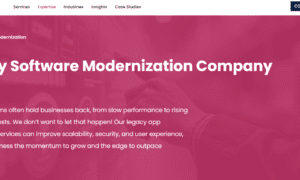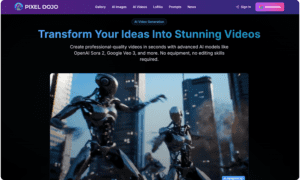Search is no longer about stuffing pages with keywords and hoping for the best. In today’s digital world, it’s about relevance, value, and creating meaningful engagement. As competition intensifies and algorithms grow more sophisticated, smart brands, especially small and mid-sized businesses, are rethinking their approach to search with strategic precision.
Let’s explore how businesses are evolving their search strategies and why those leading the way are getting better results with less guesswork.
Shifting from Keywords to Intent
Gone are the days when targeting a popular search term was enough. Now, the real game-changer is understanding intent, which is what a user truly wants to accomplish with their search.
Smart brands aren’t just writing content that includes keywords like “best software” or “top tools”—they’re addressing the real questions behind those terms. Whether a user is looking to buy, compare, learn, or solve a problem, leading brands tailor content to meet that need.
This intent-based approach builds trust, keeps users engaged longer, and improves organic rankings because it aligns with what search engines are designed to reward: relevance and usefulness.
Smarter Local SEO for Greater Impact
For small businesses, visibility in local searches is essential. That’s why brands are doubling down on local SEO, not just updating their Google Business Profile but refining every touchpoint with potential customers.
This includes:
- Optimizing for “near me” and geo-specific keywords
- Gathering and responding to reviews
- Using consistent NAP (name, address, phone) data across directories
Partnering with professionals in digital marketing for small business ensures that these strategies are executed properly, helping brands cut through the noise in their local market and appear where it matters most: on page one of search results.
Creating Content That Educates and Converts
Brands are no longer relying solely on sales pages; they’re acting like publishers. Blogs, how-to guides, explainer videos, and FAQs serve multiple purposes: attracting organic traffic, demonstrating expertise, and nurturing customer trust.
This content-first approach helps brands rank for long-tail keywords, answer customer questions before they’re asked, and build authority in their niche. And because it’s genuinely helpful, this content is more likely to earn backlinks and social shares, further boosting search visibility.
Structured Data for Enhanced Search Results
Structured data (schema markup) helps search engines understand the context of your content. Brands using it benefit from rich snippets—those star ratings, event details, FAQs, and product info that make search results more clickable.
Implementing structured data doesn’t just boost rankings. It improves user experience before users even visit your site. For businesses offering services or events, these enhancements can be the difference between being overlooked and being the obvious choice.
SEO and Paid Search in Sync
Smart brands no longer treat SEO and pay-per-click (PPC) as siloed efforts. Instead, they use insights from paid campaigns to refine organic content strategies and vice versa.
For example, PPC data can reveal which keywords convert best, allowing teams to create blog posts and landing pages around them. On the other hand, strong organic rankings in a niche area can reduce the need for high ad spend in that space.
This synergy helps businesses maximize visibility and budget effectiveness.
Prioritizing Mobile and Speed
Google’s mobile-first indexing means your site’s mobile experience now affects how it ranks. Slow, clunky websites—even if beautifully designed—will be penalized.
Smart brands are investing in:
- Responsive design
- Fast-loading pages
- Clean navigation on mobile devices
These updates aren’t just about rankings—they improve the experience for real people, which leads to higher engagement and better conversion rates.
Tracking Performance and Adapting Quickly
Gone are the days of “set it and forget it.” Today’s SEO is dynamic, requiring regular performance monitoring and real-time adjustments.
Top-performing brands use analytics tools to track:
- Page rankings and traffic sources
- Bounce rates and time on site
- Which pages convert, and which don’t
By analyzing this data, they identify what’s working, fix what’s not, and continue to refine their strategy for better outcomes.
Targeting Underserved Niches
Instead of trying to rank for ultra-competitive keywords, smart businesses are identifying long-tail keyword opportunities, very specific terms that signal high intent and lower competition.
For example, rather than aiming for “digital marketing,” a business might target “SEO for independent bookstores” or “email marketing tips for wellness coaches.” These niche audiences are often more engaged and more likely to convert.
This approach allows smaller brands to compete effectively against larger players by being more relevant, not necessarily more visible at scale.
Conclusion: Search Smarter, Not Harder
Today’s search success isn’t about hacking the algorithm. Instead, it’s about aligning with it. Brands that invest in thoughtful content, understand their audience, and integrate smart SEO practices into their broader digital strategy are reaping long-term rewards.
With expert support, even the smallest players can become search-savvy contenders. By focusing on value, user experience, and continual optimization, your brand can stay ahead without chasing trends or burning out your team.



































